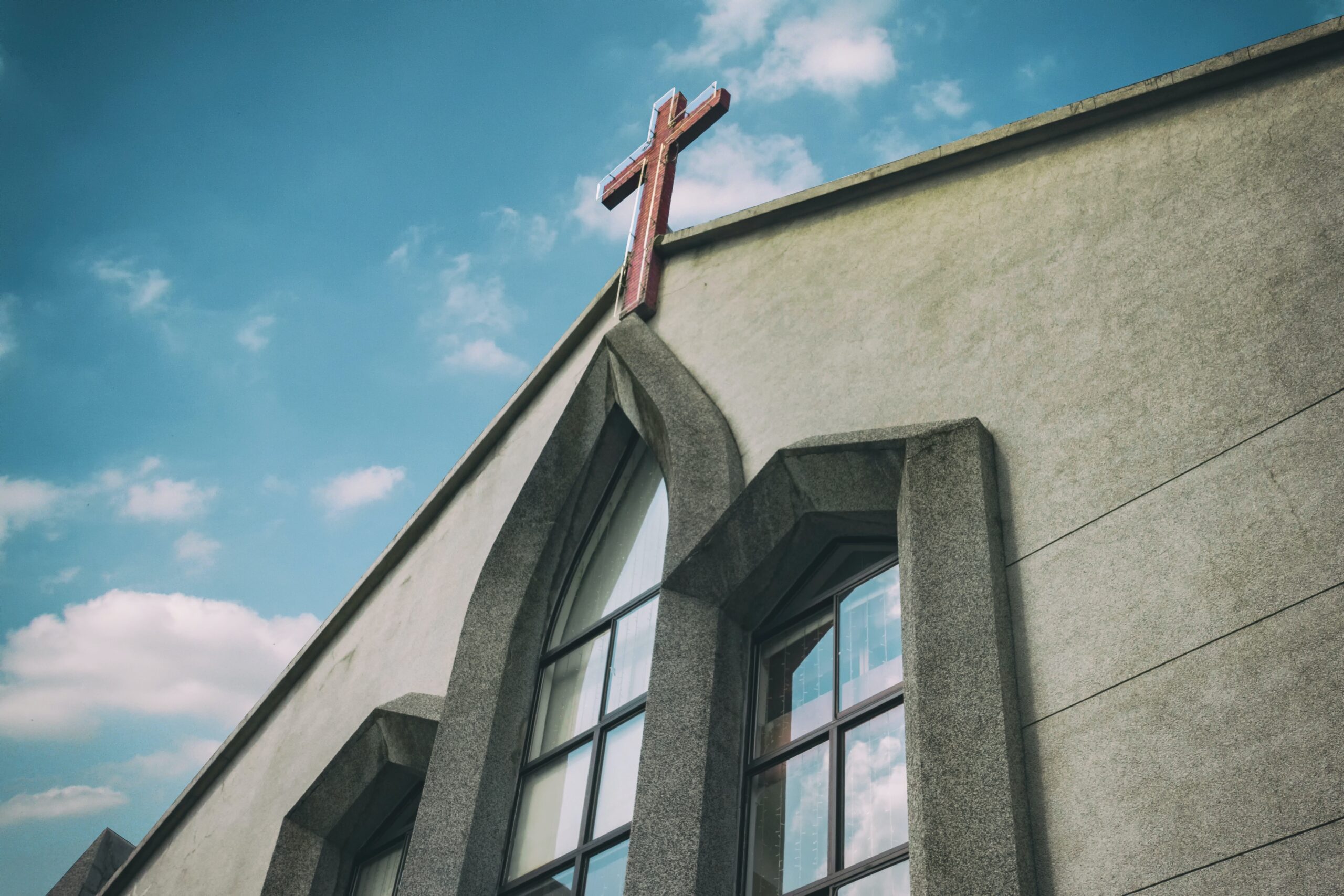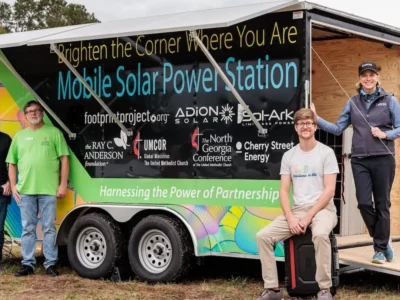In the heart of coal country, churches are looking to the energy horizon for alternative ways to power Appalachia and refuel the workforce.
Funding Solar Panels through Water Heaters
Today, the Inflation Reduction Act provides extremely attractive incentives to churches to encourage houses of worship across the country to pursue solar energy and other energy efficient upgrades to their property.
But back in 2014, Shepherdstown Presbyterian Church in West Virginia had to get creative to make their solar array dreams come true.
Led by congregant member Dan Conant, the church had planned to pursue a third-party ownership model, but West Virginia regulations didn’t allow for that approach at the time. To raise funds to own the panels outright, Conant connected with about 100 homes and businesses in the community to install smart-control water heater devices from Mosaic Power. These devices reduce the use of power during peak usage hours, saving both energy usage and money. Volunteers then turned around and donated the savings back to the church.
This creative fundraising approach covered the cost of 60 solar panels in less than a year.
As a result of the solar installation at Shepherdstown Presbyterian, the EPA’s greenhouse emission calculator estimates that, between the array and the water heater devices, the church’s project has saved the equivalent of 167,000 pounds of coal annually and supplies about a third of the church’s electricity needs.
The project led to Conant launching Solar Holler, the largest solar installation company in West Virginia.
“West Virginia has given everything to power the rest of the country for the last 150 years,” Conant shared as part of a Sojourners Magazine series on Growing a Green Church. “We want to make sure that as we build out clean energy for this century, that we’re not leaving behind our entire swath of the nation.”
Planting Seeds of Solar for a Plentiful Clean Energy Harvest
The congregation of St. Paul’s Episcopal Church in Mt. Lebanon, Pennsylvania decided to go solar because of its prime location, tucked on the ridge of a hill in a highly traveled, nationally registered historic district. To pay for their project, St. Paul’s launched a capital campaign, raising $48,000 for 51 panels.
The solar array at St. Paul’s saves them about $1,000 per month in electricity. But in addition to these savings, the church hopes to be a beacon to other communities and community members to pursue solar.
When a church decides to invest in solar, curiosity and enthusiasm for alternative energy spreads throughout the community. A friend, a neighbor, or just another home or church in the community is one of the best ways to spur people on to investigate a solar installation for themselves.
After St. Paul’s installation, three parishioners added solar to their homes, and the Mt. Lebanon municipality recently began adding solar panels to some government buildings.
Inflation Reduction Act Benefits Are Great for Appalachian Communities
The 2022 Inflation Reduction Act has made solar for churches like St. Paul’s and Shepherdstown Presbyterian significantly more feasible than when these two churches first installed their arrays.
Today, houses of worship qualify for a 30 percent direct payment from the federal government. Churches that are in low-income communities are eligible for an additional 10 percent. Churches located in a region that is considered an “energy community” are eligible for another 10 percent. This includes the coalfields of central Appalachia.
Just like that, Appalachian churches can stand to save half on the cost of their solar project, not to mention all of the long-term energy cost savings and the example churches set for the region in turning the tide for alternative energy.
And, they fuel the local economy.
Solar Can Lead to Job Growth in Appalachia
Solar Holler, the company that Conant started after his church’s solar project, has installed 1,300 projects in other churches, nonprofits, homes, and businesses throughout West Virginia so far. Now, it’s working on training more electricians in solar installation to meet the projected need over the next ten years.
Appalachia stands to gain the greatest benefits from renewable energy of any region in the U.S. According to RMI, the region could generate as much as $28.1 billion in solar revenue and $37.2 billion in wind revenue. With this much potential in the area, Solar Holler and other companies are making the right move to provide training and jobs to meet this demand and potentially revitalize areas of the country that have taken the brunt of economic hits over the years.
And churches can lead the charge by helping to sway the hearts and minds of their congregants, showing how clean energy can clear the air and improve their physical wellbeing, and planting seeds of hope for their future by way of new jobs and living wages doing meaningful work. The 21st century church can set an example for clean energy adoption and truly transform their communities.





 Copyright
2024
Root and Vine
Copyright
2024
Root and Vine